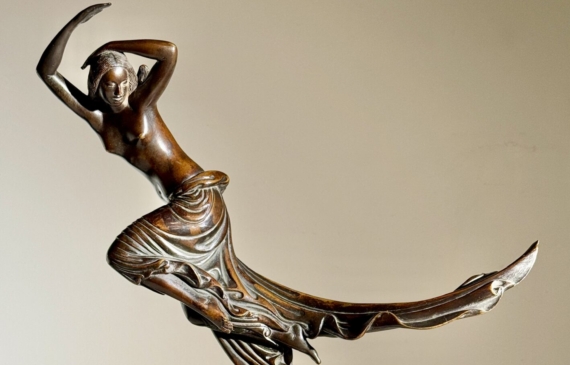
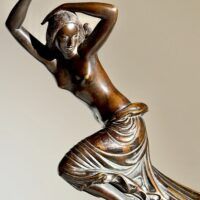
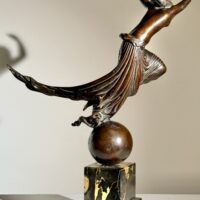
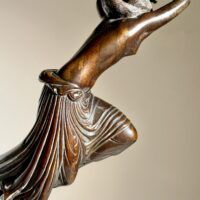
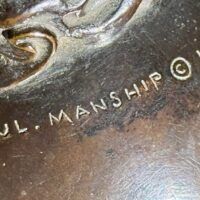
Paul Manship (American, 1885-1966)
Flight of Night, 1916
Bronze, dark brown patina
13 ¾ H. x 13 ¾ W. x 5 ⅝ D. inches
Mounted to period Italian marble base
Overall height: 17 ¾ inches
Signed and dated: PAUL. MANSHIP © 1916
Inscribed: ROMAN BRONZE WORKS N-Y-
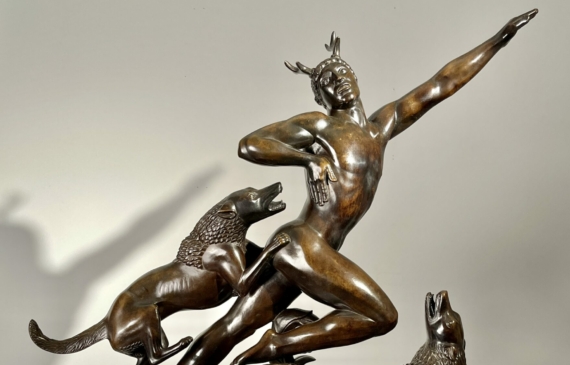
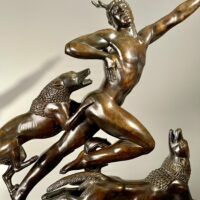
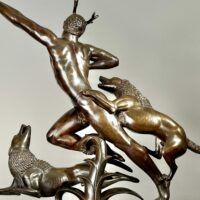
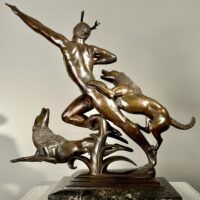
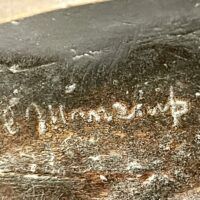
Paul Manship (American, 1885–1966)
Actaeon, 1925
Bronze, dark brown patina, 29 H. x 30 ½ W. x 8 D. inches
Signed on base: P. Manship
Accompanied by period Italian marble base
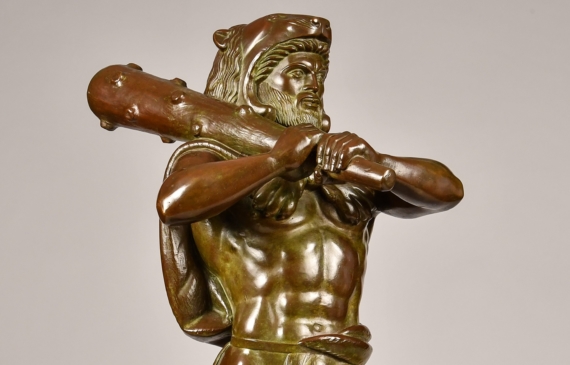
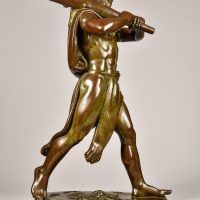
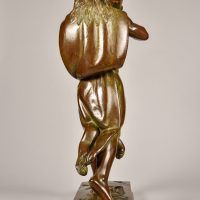
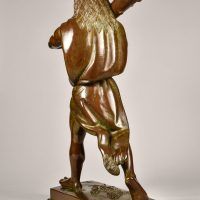
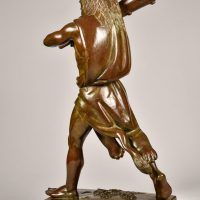
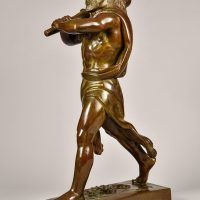
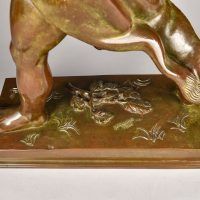
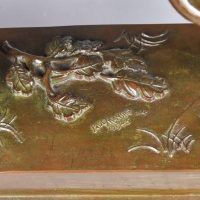
Paul Manship (American, 1885–1966)
Hercules, 1945
Bronze, Brown Greenish patina
29 ¼ H. inches
Signed and Dated: Paul Manship © 1945
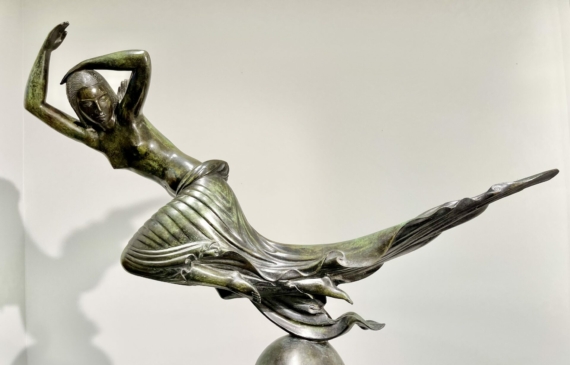
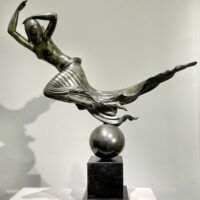
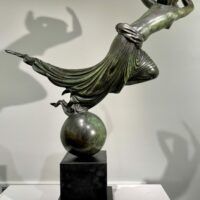
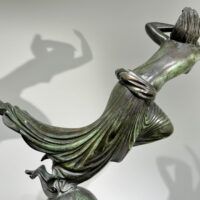

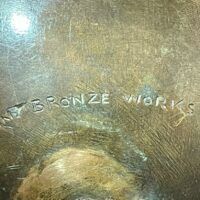
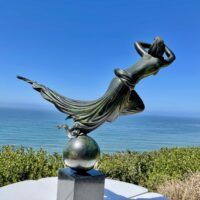
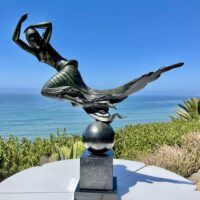
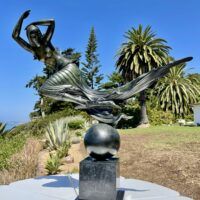
Paul Manship (American, 1885–1966)
Flight of Night, 1916
Bronze, Dark brown and green patina
26 ½ H. x 31 W. x 7 D. inches
Period marble base, 10 H., overall height: 36 inches
Signed on base: Paul Manship © 1916
Inscribed on base: ROMAN BRONZE WORKS N – Y –
Edition of six castings
Provenance:
Kennedy Galleries, New York
Private Collection, New Jersey, 1970’s
By descent, private collection, California
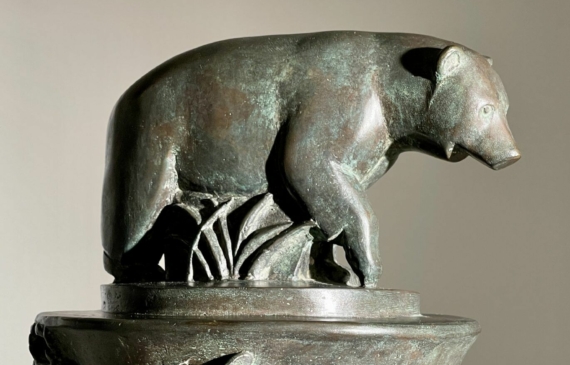
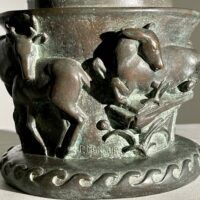
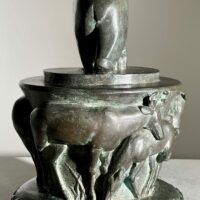
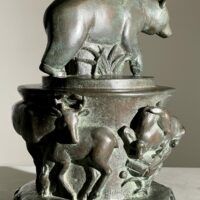
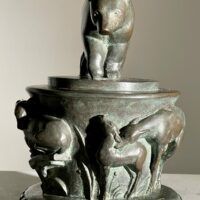
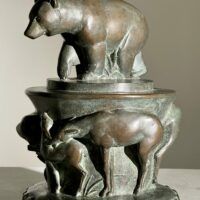
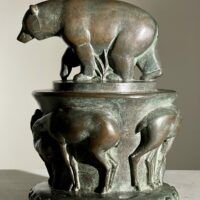
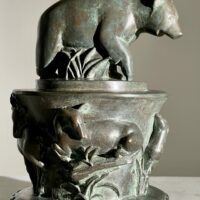
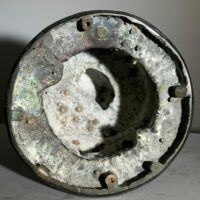
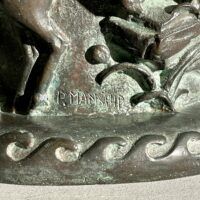
Paul Manship (American, 1885–1966)
Study, Alfred E. Smith Memorial Flagpole Base, 1946
Bronze, green and brown patina
9 H. x 7 ⅛ W. x 7 D. inches
Signed on base: P. MANSHIP
A lifetime casting executed by the artist in an edition of 1.
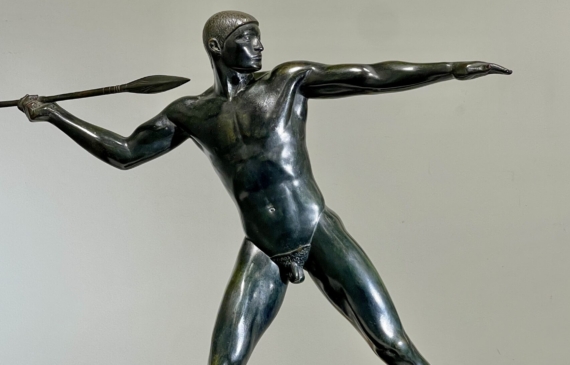
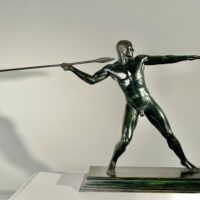
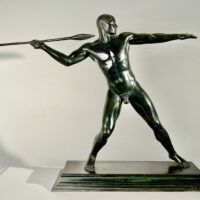
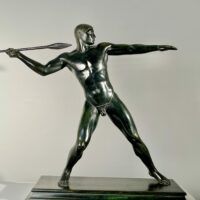
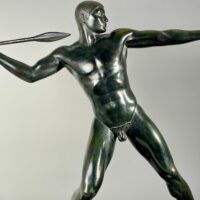
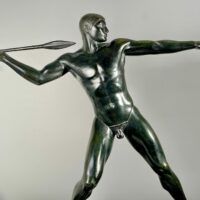
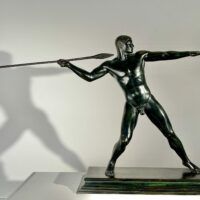

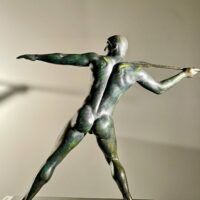
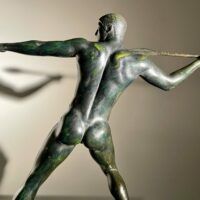
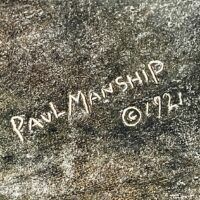
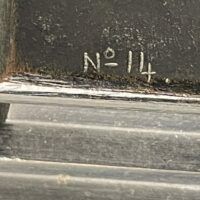
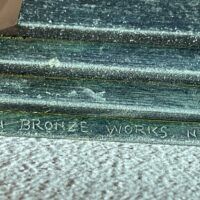
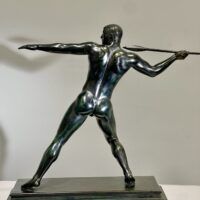
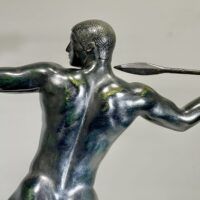
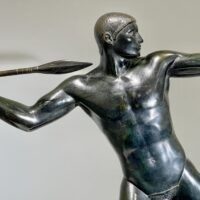
Paul Manship (American, 1885–1966)
Spear Thrower, 1921
Bronze, black and dark green patina
19 ¾ H. x 32 ½ W. x 7 ½ D. inches
Signed and dated on base: PAUL MANSHIP / © 1921
Numbered: No. 14
Inscribed on base: ROMAN BRONZE WORKS N-Y-
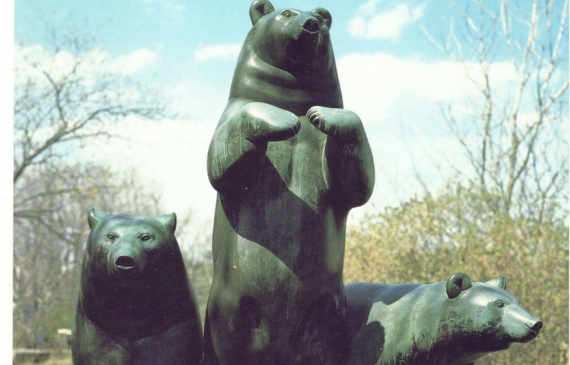

Paul Manship (American, 1885–1966)
Group of Bears, 1932
Bronze, weathered green and brown patina
88 H. x 72 W. x 56 D. inches
Signed: PAUL MANSHIP/ SCULPTOR
Foundry mark:
FOND. ARTISTICA / BATTAGLI & C / MILANO
Collection of the Metropolitan Museum of Art
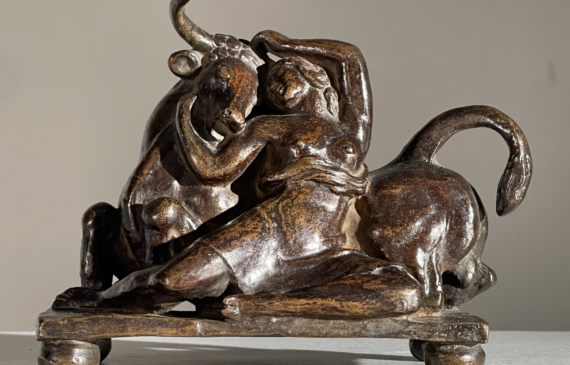
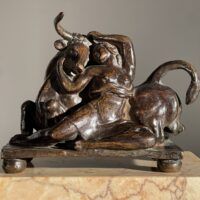

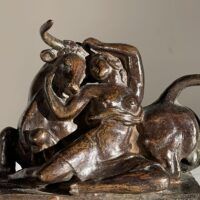
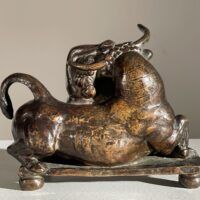
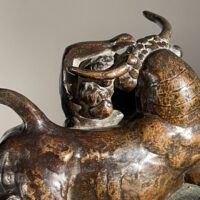
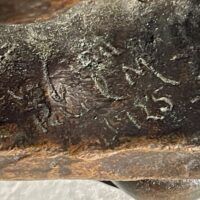
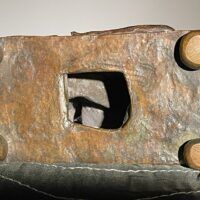
Paul Manship (American, 1885–1966)
Europa and the Bull, sketch, 1922
Bronze, dark brown patina
4 ⅛ H. x 5 ⅞ W. x 2 ⅞ D. inches
Signed on base: Paul M / 1925
Reference:
Paul Manship, Harry Rand, p. 63-65

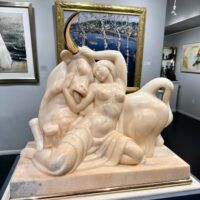
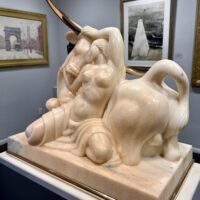
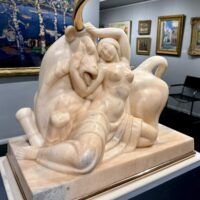
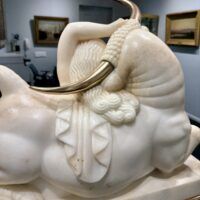
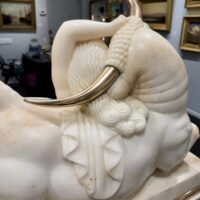
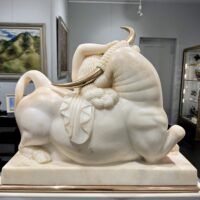
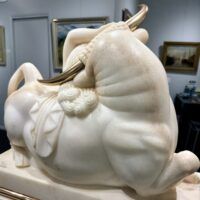
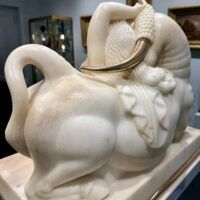
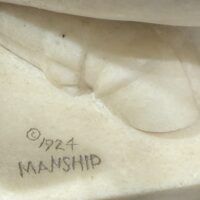

Paul Manship (American, 1885-1966)
Europa and the Bull, 1924
Pink Tennessee marble with bronze horns
20 ⅜ H. x 23 ½ W. x 13 ½ D. inches
Signed: © 1924 / MANSHIP
Mounted to solid bronze sub-base
Period custom pedestal:
40 ¾ H. x 28 W. x 17 D. inches
Provenance:
The Artist
Joseph Desloge II, Sr., Florissant, Missouri, circa 1945
Marie Desloge, Saint Louis, Missouri, 1980
By direct descent, private collection, New Mexico, 1983 until the present
Paul Howard Manship is perhaps best known as the creator of one of New York City’s most beloved public art works, the Prometheus Fountain in Rockefeller Center. Commissioned in the wake of the Great Depression, Prometheus, the great champion of Man, remains a symbol of hope and prosperity. Manship was commissioned to design this major piece of American public art at the height of his success, and it embodies the dichotomy of classicism and modernism that existed in his work and made it so popular with such a wide audience.
After studying at some of the most prestigious American institutes in his youth, Manship won the esteemed Prix de Rome in 1909. He spent three years devoted solely to his artistic development at the American Academy in Rome, and it was in Europe that he discovered his affinity for the archaic style that would come to be predominant in his mature work. Greek and Roman sculpture influenced not only Paul Manship’s style, but also his subject matter. His exposure to classical Eastern sculpture is also evident in the strong implications of motion in his works.
Stylistically Manship is considered a steward of Art Deco, the predominant
movement in the 1920s and 30s, although he himself did not proselytize it. 2 Works from his mature period showcase a refined simplification of form and line, freeing the figures from the inherent rigidity of their medium. As public taste shifted to embrace abstraction towards the end of his career, Manship’s patronage remained steady. His work is situated at an important cusp in the history of sculpture. Lauded for his skill as a craftsman and his ability to translate archaic influences into the parlance of modernism, Paul Manship’s
legacy is that of an American artist embraced by the people.